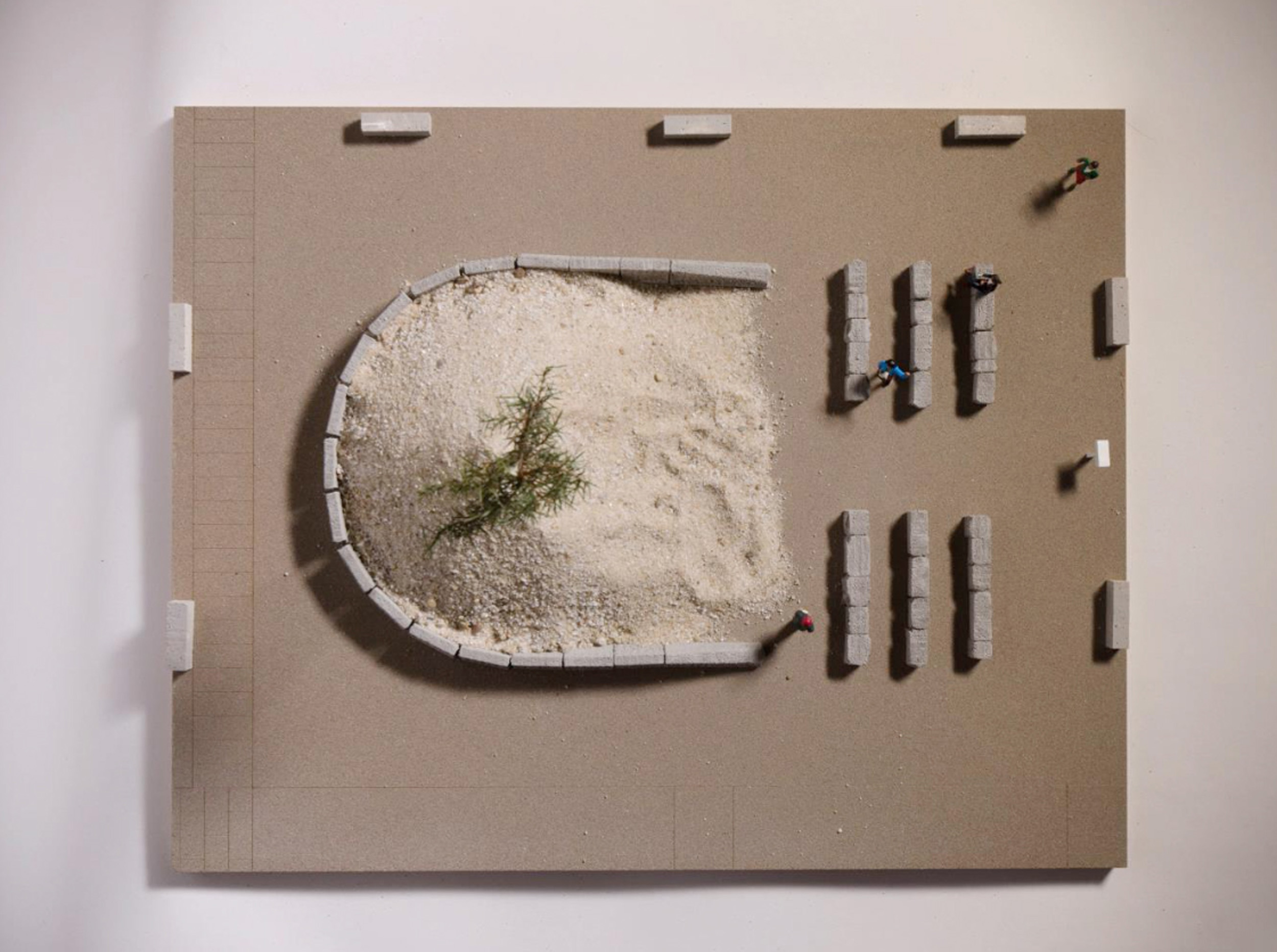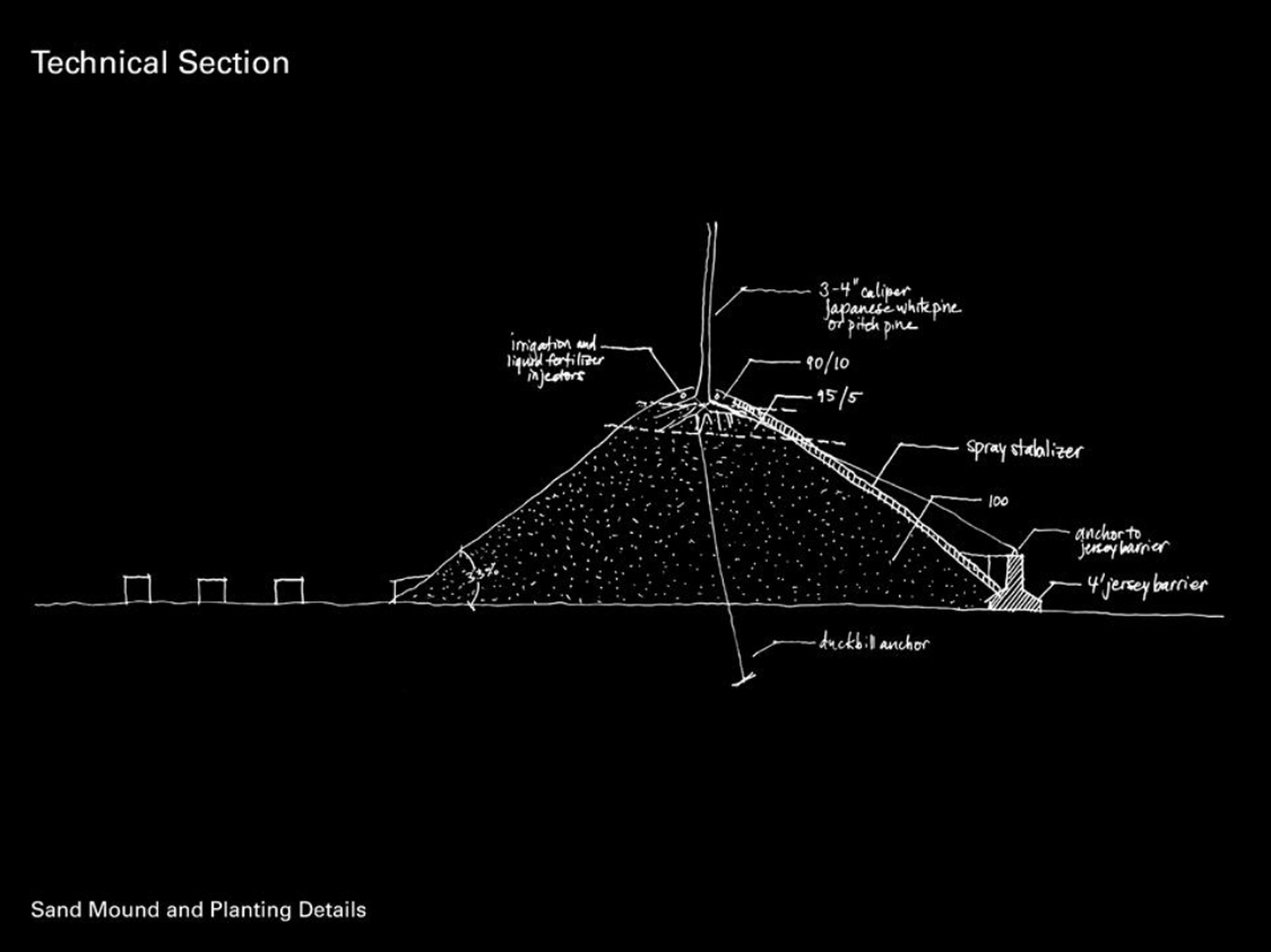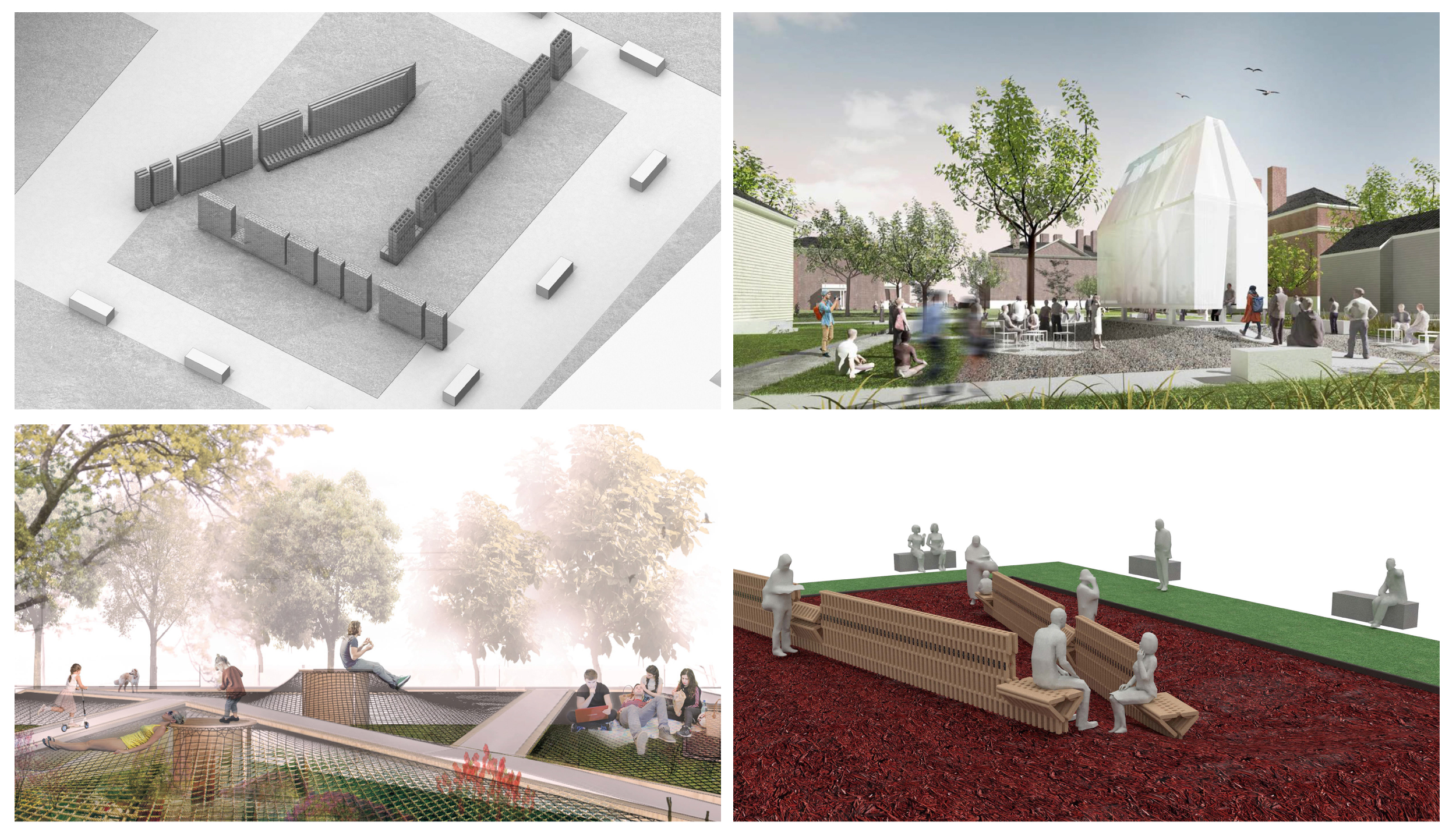
The winning project, “A Pine in the Sand,” is intentionally designed to erode over time.
Isaac Stein and Maggie Tsang
A shape-shifting design for Radcliffe Yard
Winner of student public art contest announced
On one of Cambridge’s toniest streets, just across the road from the American Repertory Theater, is a garden where horticultural growth is eschewed in favor of a different type of cultivation: fostering art and artists.
What makes the Susan S. and Kenneth L. Wallach Garden even more unusual is that despite its enviable location, the artists whose work is shown here are not celebrities. This is a space devoted exclusively to nurturing the next generation of world-class talent. Biennially, the Radcliffe Institute for Advanced Study hosts a public art competition, unique at the University because it is open only to students. The winners’ designs are funded, and their visions brought to life.
If you stroll to the garden, which abuts Brattle Street in Radcliffe Yard, you will currently find a geometric arrangement of materials: multilevel wooden decking alongside both landscaped and gravel squares. This artwork won the third cycle of the Radcliffe Institute Public Art Competition (RIPAC). Titled “100+ Years at 73 Brattle,” the installation by then-undergraduate John Wang ’16 (now M.Arch. ’21) highlights the footprints of three buildings that previously occupied the site over the course of a century. It opened in September 2017.
This week the winners of the fourth cycle of the competition were announced: Isaac Stein, M.L.A., M.Des. ’20, and Maggie Tsang, M.Des. ’19. Wang’s work will remain on view through spring 2019, while Stein and Tsang prepare to install “A Pine in the Sand,” their winning design.
A monument to impermanence
Stein and Tsang are both students at the Harvard Graduate School of Design (GSD), and their work tells a story about environmental change and the evolution of natural processes. The artwork is composed of a pine tree planted atop a mound of white sand, with rows of granite benches assembled like pews opposite the mound. Intentionally designed to erode over time, the mound will be periodically documented and re-formed during celebratory events throughout the seasons to highlight the often-overlooked maintenance work required to preserve our built and cultivated natural environments.
“Radcliffe’s competition was an opportunity for us to rethink the concept of public art, site, and the built environment as static, and to highlight processes of degradation and change,” Stein and Tsang said in a written statement. “We are very excited to work through the details of this idea with the Radcliffe team to demonstrate that maintenance is not an afterthought, but an integral process.” Through the installation, the Wallach Garden becomes a public site for rehearsing collective responses to environmental change.
Think of it, if you will, as a giant Zen garden, eager for public intervention.


Artistic renderings of “A Pine in the Sand” depict the simple elements of the piece: a pine tree installed atop a pile of sand designed to erode over time.


Yukio Lippit, professor of history of art and architecture and Radcliffe’s Johnson-Kulukundis Family Faculty Director of the Arts, said, “‘A Pine in the Sand’ proposes something of a conundrum: a monument to impermanence. The design harmonizes a range of seemingly conflicting qualities in a wonderful way. On the one hand, it comes across as dislocated, raw, and vulnerable, but on the other hand it is poetic and oddly beautiful. Its interactive dimension is crucial, and it will bring a sense of surprise and whimsy to Radcliffe Yard. It is certain to challenge and elicit varied responses from its audiences, as the best public art often does.”
The faculty jurors responded to these challenges. Robin Kelsey, dean of arts and humanities, the Shirley Carter Burden Professor of Photography, and one of the faculty jurors, said, “‘A Pine in the Sand’ combines the kind of interest in entropy we associate with 1960s land art and conceptualism with a 21st-century concern for the dramatic fragility of living systems.” He concluded, “It’s a brilliant concept, and I am eager to see it come into being.”
Asked to comment on the selection of Stein and Tsang’s design as the winner, Silvia Benedito, an associate professor of landscape architecture at the GSD and also a juror, said, “This installation foregrounds time and entropy with people’s interaction. In a time when man’s footprint is apparent everywhere, the impact of such presence requires reflection. This installation puts the effects of this presence at the center of the spatial inquiry.”
Fostering diverse kinds of thought and expression
Radcliffe launched RIPAC as part of a broader investment to integrate creative work with other forms of advanced inquiry at the institute. “Radcliffe’s investment in the arts is an important contribution to Harvard’s larger effort to foster diverse kinds of thought and expression,” said Radcliffe Dean Lizabeth Cohen. “Because the arts illuminate critical insights that might otherwise be overlooked, we aim to integrate them into our public programming. We take particular pleasure in providing students with an opportunity like RIPAC, which nurtures their talents and in turn allows us to share their artwork with a broad public when it becomes part of our Radcliffe campus for two years.”
The public will have a chance to see the models and materials of all five finalists from this year’s competition in the upcoming exhibition “Art in the Yard: Students Make Art Public at Radcliffe,” opening May 2 and running through June 30. On view along with the models will be large-scale photographs and documentary videos focused on the winners of past competitions, and historic images of the installation site from the Schlesinger Library. The exhibition will highlight the potential of public art to contribute to intellectual exploration and engagement.
The RIPAC award provides Stein and Tsang with $40,000 to bring their concept to life, as well as a $10,000 cash prize. The winners were chosen from 38 entries from 21 teams and 17 individuals. Although the vast majority of submissions came from the GSD, the competition also saw entries from Harvard College, the John A. Paulson School of Engineering and Applied Sciences, and the Graduate School of Education.




